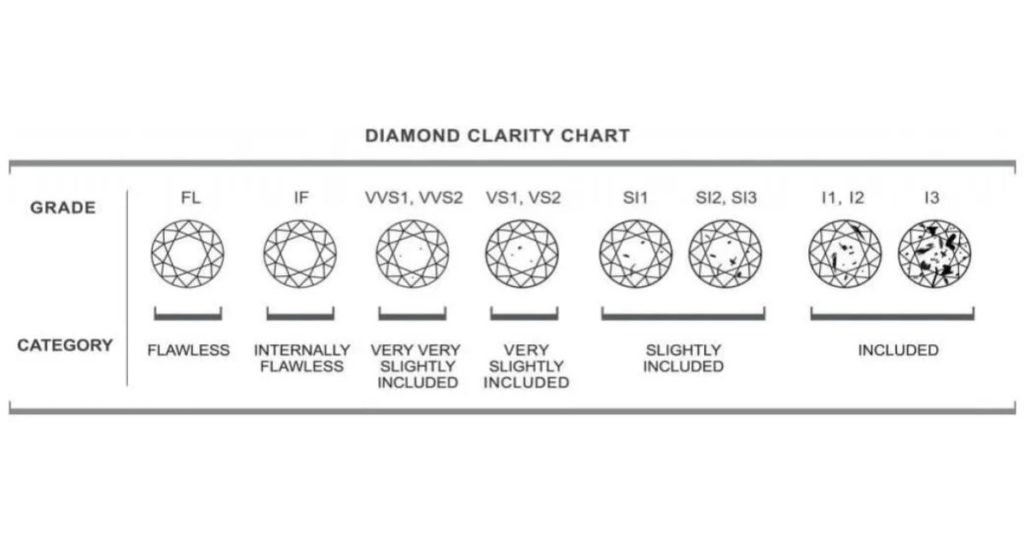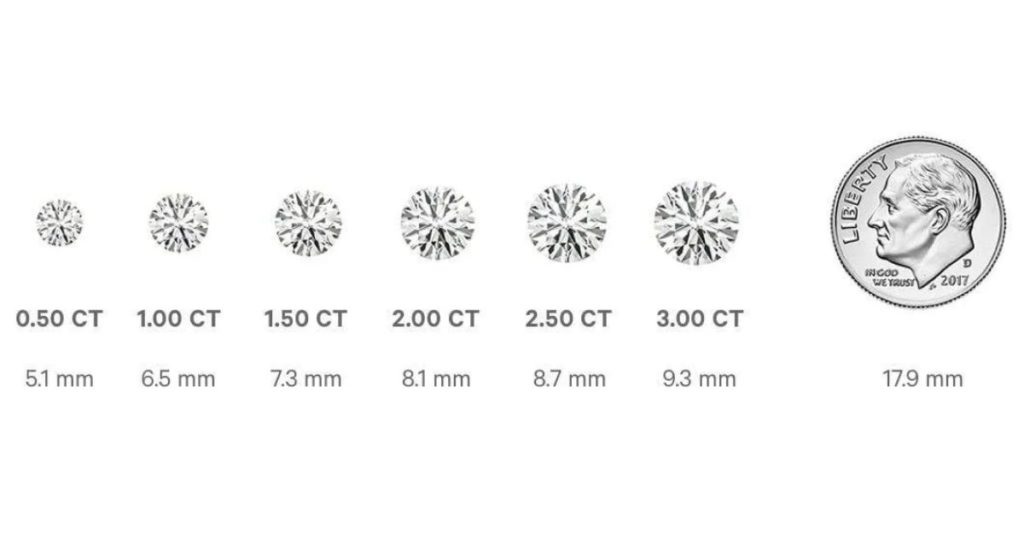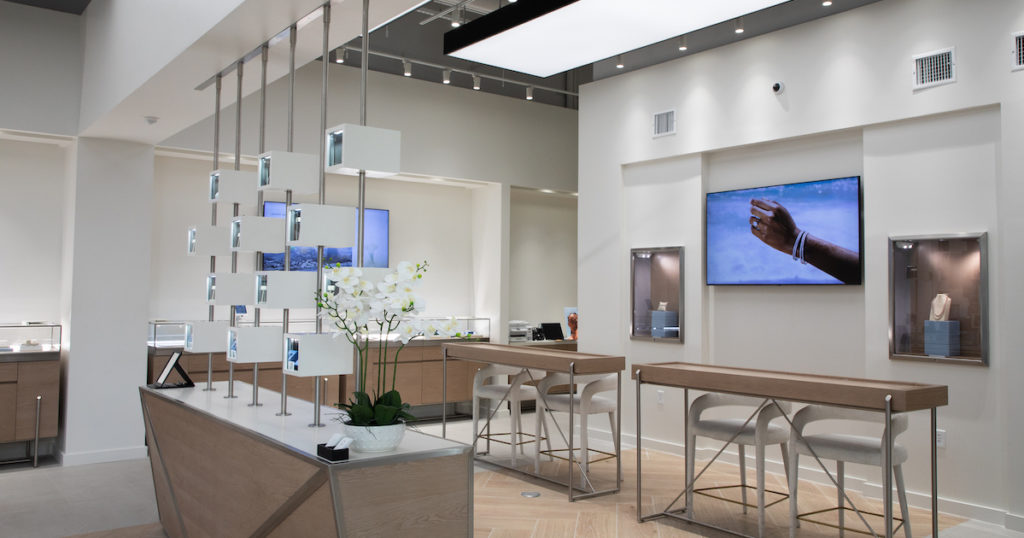If you’ve been browsing for diamonds and have come across lab grown diamonds, you may be wondering what they are.
Lab grown diamonds are relatively new in the diamond market, but they have skyrocketed in popularity because they are ethical, affordable, and stunning!
What Is a Lab Grown Diamond?

In a lab setting, scientists can produce lab grown diamonds instead of mining them from the ground. Lab diamonds are real diamonds because they are chemically and physically identical to natural diamonds mined from the Earth.
The only real difference is their origin. However, since scientists produce lab created diamonds in a lab, these stones exhibit some other key differences from natural diamonds.
Sometimes people refer to lab grown diamonds as synthetic diamonds, but we don’t prefer to use this term because lab diamonds are real, not fake. They differ in origin rather than composition.
How Much Do Lab Grown Diamonds Cost?

The quality of a lab grown diamond will determine its price, just like we’d see with natural diamonds. Lab grown diamonds aren’t fake diamonds or alternatives like cubic zirconia, so they will cost around the same amount as natural diamonds.
If you’re buying a lab grown diamond for an engagement ring, you’ll have so much extra cash in your pocket that you could use to do endless things– think bigger diamonds, a honeymoon, or savings.
Lab Grown vs. Mined Diamond Prices

Lab grown diamonds are 20 – 40% less expensive than mined diamonds, and these can be huge savings when you think about diamonds costing thousands of dollars.
The exact price comparison will vary based on the size of the diamond and its specific qualities, but you can always expect to save money by choosing a lab created diamond over a mined one.
When talking about bigger diamonds, the price difference between lab diamonds and natural diamonds is increasingly large. You may see prices of natural diamonds in the tens and hundreds of thousands, while lab diamond pricing will stay much lower.
If you’re in the market for a huge, show-stopping diamond, then lab grown may be the best way to get the diamond larger than you ever imagined.
Diamond Price Chart
To compare the common prices of lab grown diamonds and mined diamonds, you should look at their prices by carat weight.
This is because all diamonds have a price per carat, which helps jewelers and shoppers compare the prices between diamonds. This table shows the total price for a diamond of a specific carat weight and compares mined diamonds to lab grown diamonds.
Carat Weight Mined Lab Grown
| Carat Weight | Mined Diamonds | Lab Grown Diamonds |
| 0.50 | $1,000-$4,000 | $600-$1,000 |
| 1.00 | $2,000-$18,000 | $1,300-$6,000 |
| 1.50 | $8,000-$20,000 | $2,000-$12,000 |
| 2.00 | $13,000-$38,000 | $4,000-$18,000 |
| 2.50 | $23,000-$70,000 | $6,000-$24,000 |
| 3.00 | $36,000-$120,000 | $9,000-$27,000 |
How Are Diamond Prices Determined?
Certified organizations like the Gemological Institute of America independently grade all diamonds to determine their quality and price.
The inspection and testing process rigorously examines each diamond to ensure accurate and fair grading. The four main categories that are assessed are cut, color, clarity, and carat weight.
What Is Cut?

The process of cutting and polishing a diamond turns a rough diamond into a shiny and sparkly masterpiece. You want to find a diamond with an ideal cut because it will reflect light the best and be the most brilliant.
What Is Color?

The color of a diamond can sometimes be seen in natural lighting. Diamonds with a slight tint of yellow or brown are undesirable, while colorless diamonds are the most sought after because they look the most shiny and sparkly.
What Is Clarity?

The atoms making up a diamond do not align perfectly while forming, resulting in most diamonds having some form of imperfections or blemishes. These imperfections are often so minuscule you’ll need magnification to spot them.
What Is Carat Weight?

Carat weight is simply how much the diamond weighs in carats (one carat = 1/5 gram), and it is associated with size. Diamonds larger than two carats are considered large, while diamonds in the one to two carat range are the most typical for engagement rings and diamond pendants.
Can a Jeweler Tell if a Diamond Is Lab Created?

Lab created diamonds are physically and chemically the same as mined diamonds, so they are for sure real diamonds.
However, it is possible to know if your diamond is lab grown or mined. Lab grown diamonds are marked with a special engraving that denotes them as lab grown.
If you use a diamond tester, a lab grown diamond will test as real. It is not a diamond alternative like cubic zirconia or moissanite. Lab grown diamonds are real diamonds!
You won’t be able to tell the difference when looking at a natural diamond or lab grown diamond.
How Are Lab Grown Diamonds Made?

There are several techniques used to create lab grown diamonds. The processes can take a while, but it’s nowhere near the same time that natural diamonds take to form in the Earth.
While some mined diamonds take billions of years to form, most processes used to create lab grown diamonds take a couple of weeks at most.
Chemical Vapor Deposition
A diamond seed is placed in a chamber with hydrogen and methane gas. The gases break down and carbon bonds form on the diamond seed until it is big enough.
High Pressure High Temperature
A starting diamond seed is placed in a chamber with a carbon seed and subjected to extremely high temperature and pressure. The carbon begins to melt and reform, creating the diamond structure.
Why Should You Choose a Lab Grown Diamond?

We could list so many reasons why you should choose lab grown diamonds, but we’ll stick to some of the most important ones. Lab grown diamonds have a much shorter supply chain, which helps lower costs tremendously. But besides the obvious cost benefit of lab grown diamonds, there are surprisingly more.
Environmental Effects of Mining Diamonds
In order to create mines, people have to destroy huge areas of land and constantly dig up earth. When a mine can no longer be used, the land is left barren and unusable, which affects wildlife and nearby civilization.
Ethical Concerns of Mined Diamonds
Unfortunately, the diamond industry is not known for its ethical labor practices, and laborers have often been exploited in the past. Sometimes child labor is employed or employees are subjected to dangerous working conditions.
There is little access to protective equipment or tools that would help keep workers safe, which makes mining a very dangerous job.
Where to Buy Lab Grown Diamonds

Clean Origin is a leading retailer of stunning lab grown diamonds and diamond jewelry like engagement rings, pendant necklaces, earrings, and more!
Every lab grown diamond from Clean Origin is certified and 100% ethical. You can feel a sense of pride when wearing Clean Origin jewelry and know that you are getting the best value for your money.



